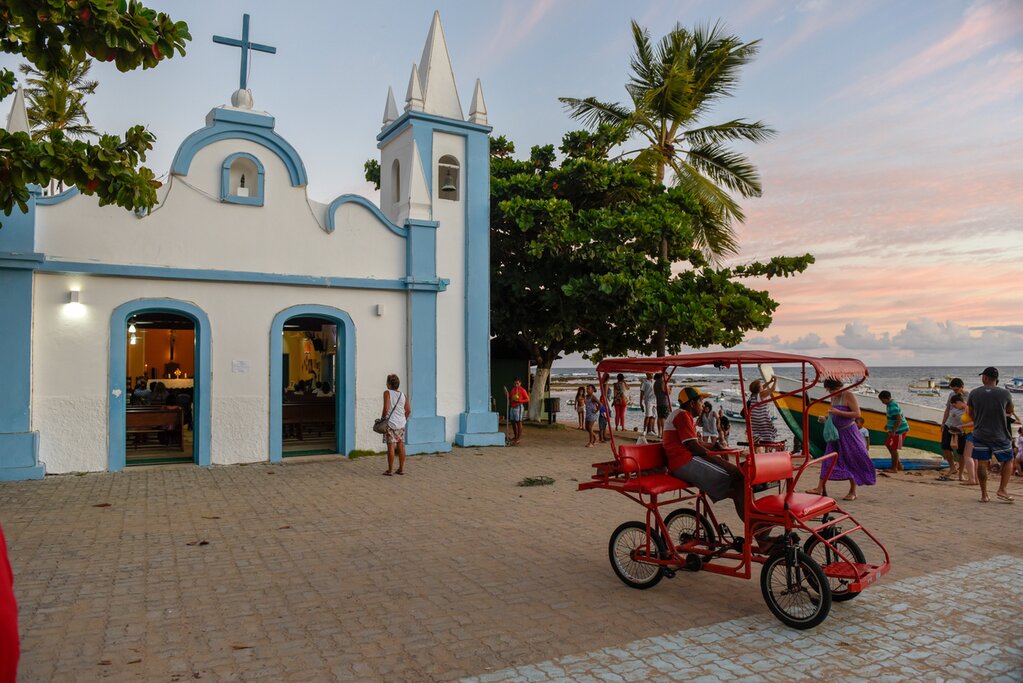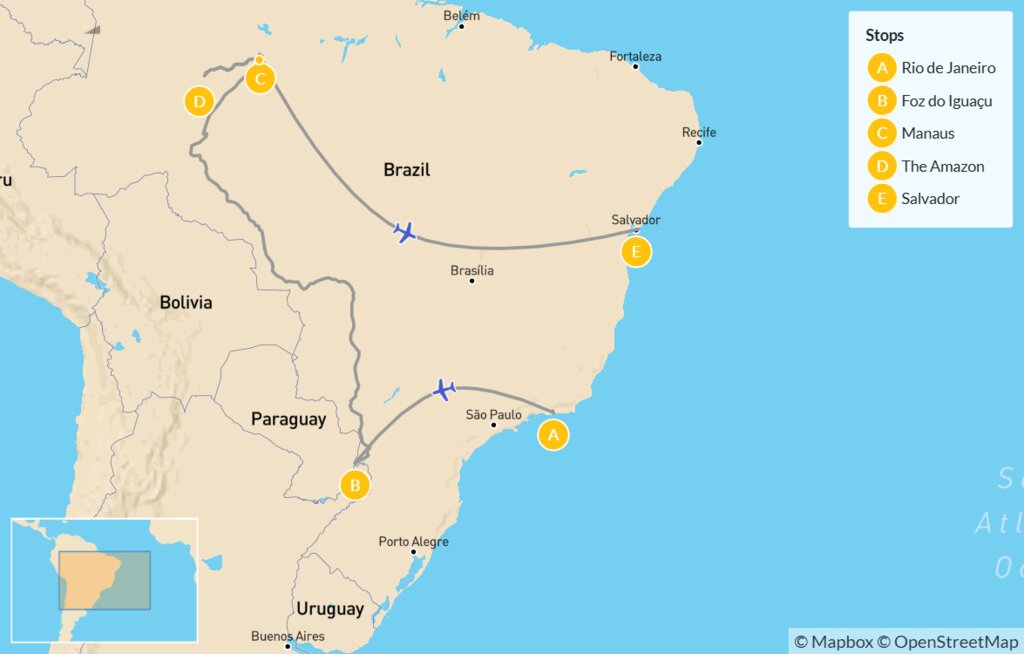Highlights
- Get a bird's-eye view over Rio with a cable car ride up Sugarloaf Mountain
- Hike, bike, and boat your way around the roaring Iguaçu Falls
- Cruise along the Rio Amazonas to reach your remote rainforest lodge
- Experience Salvador's rich Afro-Caribbean culture with a drumming workshop
- Laze on golden beaches and spot humpback whales near Praia do Forte
Brief Itinerary
| Day | Highlights | Overnight |
|---|---|---|
| Day 1 | Arrive in Rio de Janeiro, Hike to Sugarloaf Mountain | Rio de Janeiro |
| Day 2 | Rio Like a Local City Tour, Carnival Culture Experience | Rio de Janeiro |
| Day 3 | Art & Architecture Tour in Niterói | Rio de Janeiro |
| Day 4 | Christ the Redeemer Tour, Fly to Foz do Iguaçu | Foz do Iguaçu |
| Day 5 | Explore the Argentine Side of Iguazú Falls | Foz do Iguaçu |
| Day 6 | Explore the Brazilian Side of Iguaçu Falls, Fly to Manaus | Manaus |
| Day 7 | Transfer to Amazon Lodge via Boat, Afternoon Rainforest Activities | The Amazon |
| Day 8 | Amazon Rainforest Activities: Canoeing, Fishing & Indigenous Customs | The Amazon |
| Day 9 | Transfer to Manaus via Boat, Fly to Salvador | Salvador |
| Day 10 | African Heritage City Tour, Bahian Percussion Workshop | Salvador |
| Day 11 | Salvador Market Tour, Art & Literature of Bahia, Rio Vermelho Nightlife | Salvador |
| Day 12 | Transfer to Praia do Forte, Afternoon Whale Watching Tour | Praia do Forte |
| Day 13 | Beach Day in Praia do Forte | Praia do Forte |
| Day 14 | Transfer to Salvador, Depart |
Detailed Itinerary
Day 1: Arrive in Rio de Janeiro, Hike to Sugarloaf Mountain

Welcome to Rio de Janeiro, the Cidade Maravilhosa (Marvelous City)! From its rich cultural scene to its soaring mountains, tropical forests, and golden beaches, Brazil's second-largest city is the perfect place to kick off your adventure. Upon arrival at the airport, a driver will be waiting to transfer you to your hotel, where you'll have time to settle in and rest before grabbing your hiking boots and meeting your guide for a trip up the iconic granite rock formation of Pão de Açúcar (Sugarloaf Mountain).
Begin on the sands of Praia Vermelha, where you'll find Sugarloaf, the smaller peak of Morro da Urca, and the cable car terminal. From here, you'll hike 721 feet (220 m) to the top of Morro da Urca on a steady route that winds its way up the mountain and takes about 45 minutes to complete. At the trail's end, switch to the cable car to reach the top of Sugarloaf, rising 1,299 feet (396 m) above the harbor. After enjoying the panoramic views and snapping plenty of photos, you'll head back down by cable car and return to your hotel.
Day 2: Rio Like a Local City Tour, Carnival Culture Experience
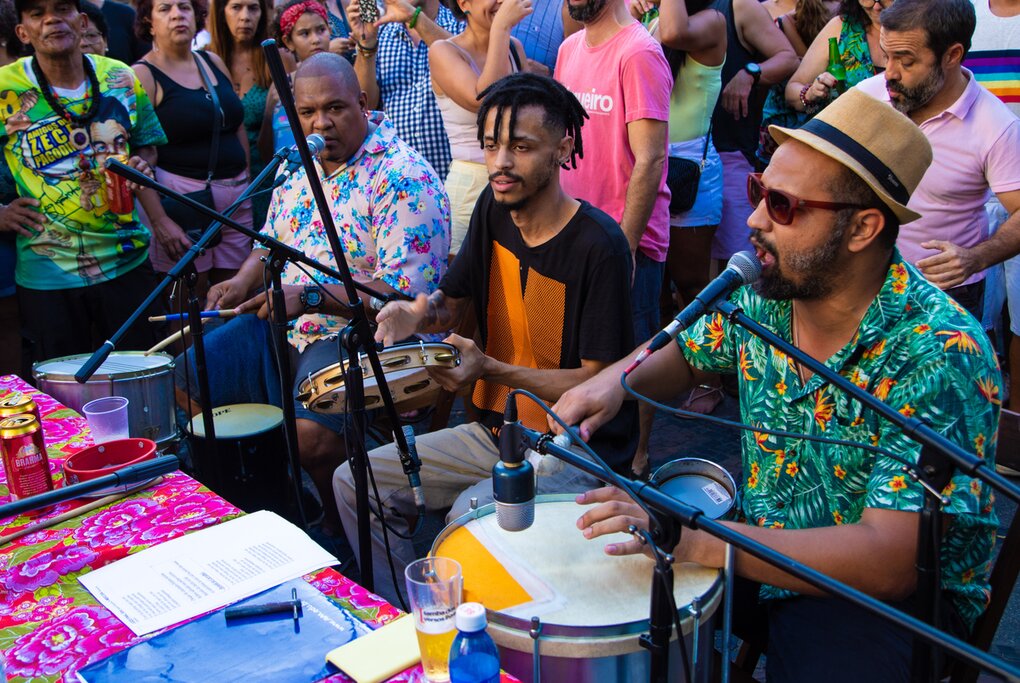
Venture out into the city today and experience authentic Carioca culture in the company of a local guide. Your excursion starts with a 15-minute subway ride to the historic city center, followed by a walking tour to highlights like the conical-shaped São Sebastião Cathedral and the Saara Shopping District, a lively hub for bargain hunters. End the morning with a buffet lunch and pastry desserts at Confeitaria Colombo, an Art Nouveau landmark and one of the oldest restaurants in Brazil.
After eating, it's time to learn more about Rio's famous Carnival celebrations as you head over to the port neighborhood of Pedra do Sal, the birthplace of samba music, for a behind-the-scenes tour of one of the city's many samba schools. Even if you aren't here during Carnival (beginning the Friday before Ash Wednesday), you'll see people working diligently during this yearlong process of building floats, sewing costumes, and preparing dance routines. At the end of the tour, enjoy a caipirinha, Brazil's national cocktail made with cachaça (sugar cane liquor) and lime, before returning to your hotel via the subway.
Day 3: Art & Architecture Tour in Niterói

Today, you'll take a little trip just over Guanabara Bay to the city of Niterói. Like Rio, it's home to glorious golden beaches, but it's even famous for its eye-catching architectural landmarks designed by Brazilian Oscar Niemeyer, considered one of the fathers of modern architecture in Latin America. With the help of an expert guide, you'll follow the Niemeyer Path, which stops at his famous buildings.
First, enjoy a visit to Praia de Icaraí, known as the "Copacabana of Niterói." From there, head to the Contemporary Art Museum (MAC), with its unmistakable flying-saucer design and a prime position on the Mirante de Boa Viagem viewpoint, which looks across Guanabara Bay back to Rio's skyline. On a visit inside, you can admire the museum's over 1,200 works of modern art. Make a final stop at the historic Mercado São Pedro, the largest fish market in the state of Rio de Janeiro, and enjoy a delicious seafood lunch before returning to Rio.
Day 4: Christ the Redeemer Tour, Fly to Foz do Iguaçu
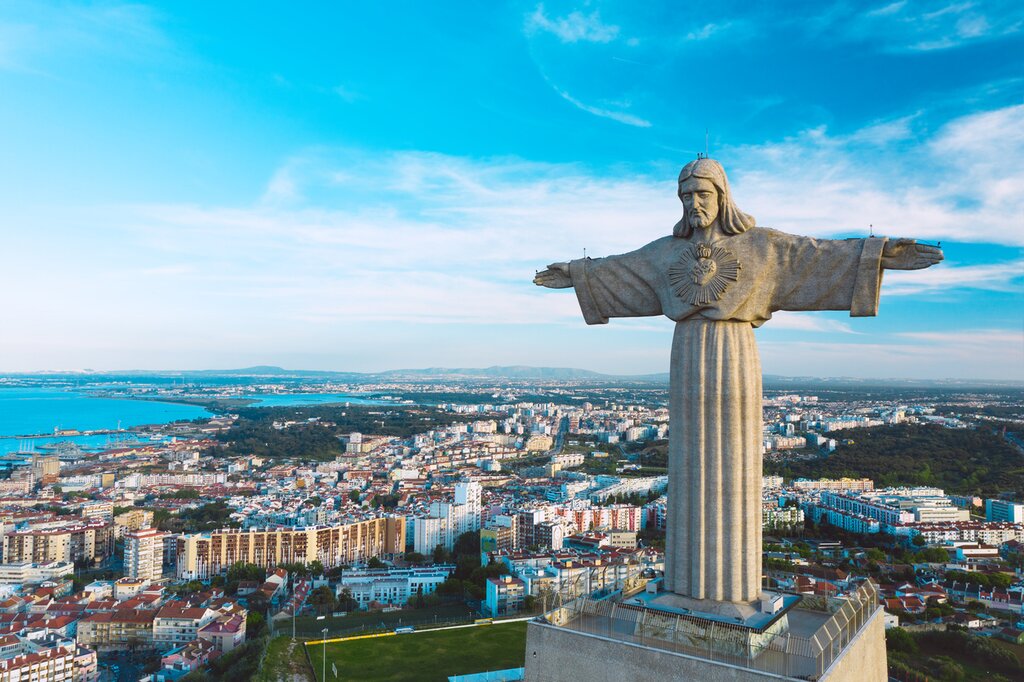
No trip to Rio is complete without a visit to its most iconic landmark and one of the New Seven Wonders of the World: Christ the Redeemer. Perched atop the 2,300-foot (700 m) peak of Corcovado, this giant representation of Christ looks down benevolently over the city below with open arms. Your visit starts with a transfer to Tijuca National Park, the largest urban park in the world at 8,300 acres (3,359 ha). From here, a train will take you up through the lush forest to the peak, where you can see all of Guanabara Bay, the southern beaches, and far north to the adjacent city of Duque de Caxias.
After some downtime back at the hotel, it's time to pack up your things and meet your driver for a transfer to the airport, where you'll catch a two-hour flight to Foz do Iguaçu. Located in the far south of Brazil at the border with Argentina and Paraguay, this city serves as the gateway to Iguaçu Falls, one of the largest waterfall systems on Earth that straddles the borders of Brazil and Argentina.
Day 5: Explore the Argentine Side of Iguazú
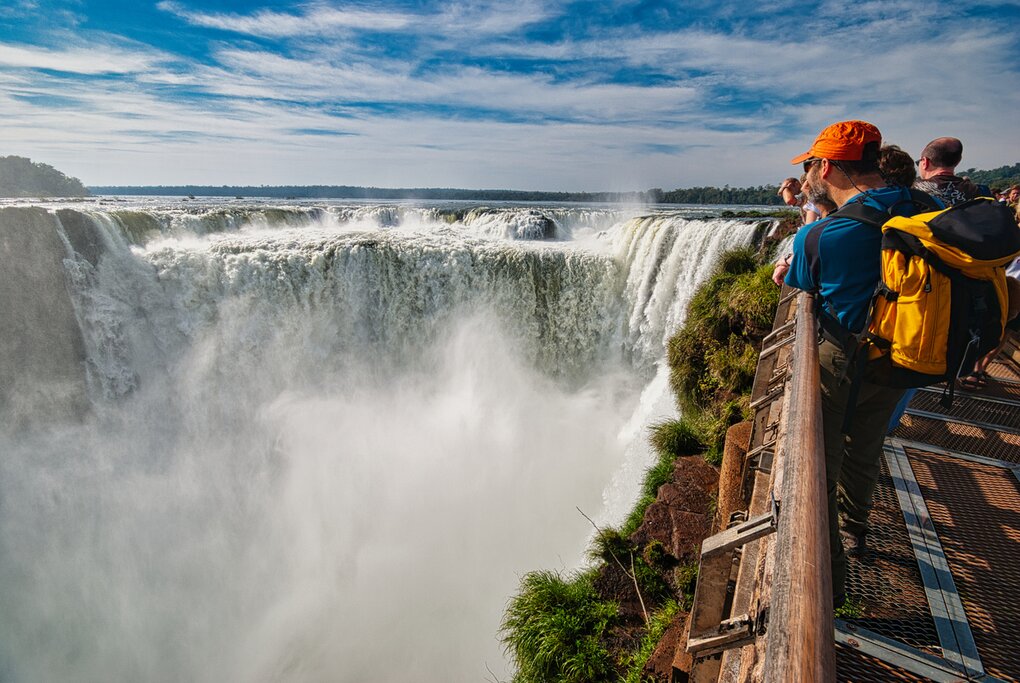
Grab your passport and say goodbye to Brazil for the day as you head to the Argentine side of the falls, known as Iguazú. Here you'll follow your guide down the various trails and boardwalks leading to different lookout points to admire the falls from every angle. The highlight of the Argentine side is the tallest waterfall, Garganta del Diablo, which plunges over 262 feet (80 m) into mist-shrouded pools.
After lunch, you'll traverse the jungle in a 4WD vehicle to Porto Macuco, where you can board a boat to navigate the turbulent Río Iguazú and get an up-close look at the falls. Head upriver to the base of Salto Tres Mosqueteros, where you'll be enveloped by the mist and thunderous sound of the waterfall. Next, your captain will take you as close as possible to the second-largest drop in the falls, Salto San Martín, so you can look over the precipice before disembarking at Isla San Martín and transferring back to your hotel.
Day 6: Explore the Brazilian Side of Iguaçu, Transfer to Manaus

Today, you'll explore more of the Brazilian side of the falls, starting with a transfer to the visitor center in the park. Strap on a helmet, grab a bottle of water, and hop on a bike to hit the trail with your local expert guide. All told, you'll pedal about 6 miles (10 km) along forest trails, treated to epic views of the 275 cascades that make up the Iguaçu along the way. Eventually, you'll leave your bike at a viewpoint and take a forest hike along ascending and descending trails with spectacular waterfall views. At the end of the trail, you can return to the visitor center by bike or hop on a park bus.
In the afternoon, your driver will transfer you to the airport, and you'll catch a connecting flight north to Manaus. This is the largest city and capital of the Brazilian state of Amazonas and a hub for trips down the mighty Rio Amazonas. Upon arrival at the airport, your driver and guide will pick you up and take you to your hotel in the city. If you're keen to start learning more about the rainforest, you could head to the nearby Museu da Amazônia (MUSA), a botanical garden in the Adolpho Ducke Forest Reserve where researchers learn more about the Amazon's wonders and promote the conservation of the environment.
Day 7: Transfer to Amazon Lodge via Boat, Afternoon Rainforest Activities

Spend the afternoon discovering more of the Amazon with immersive nature activities
The rainforest portion of your trip begins today when you hop in a boat for a ride along the Rio Amazonas, making your way to a remote lodge. Watch as your guide points out monkeys and colorful birdlife on the lush riverbanks, and listen as they share fascinating facts about the region and its Indigenous people. When you pull up to the dock, you'll be welcomed with fresh fruit juice before check-in.
Get settled in your room and put your feet up for a while, then embark on your choice of exciting rainforest activities this afternoon. You might cruise down the river in a motorized canoe to visit a ribeirinhos (river people) village, learning about the native fruit that grows in the area and visiting a traditional casa de farinha (manioc flour house) along the way.
Day 8: Amazon Rainforest Activities: Canoeing, Fishing & Indigenous Customs
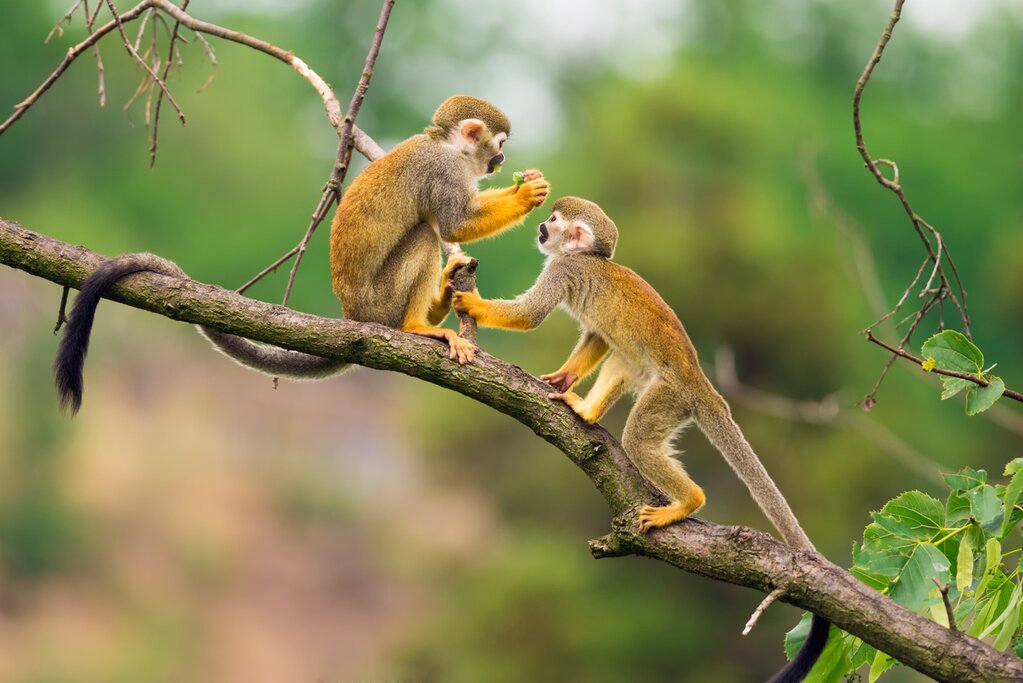
Chat with a local specialist who can help organize your trip.
Day 9: Transfer to Manaus via Boat, Fly to Salvador
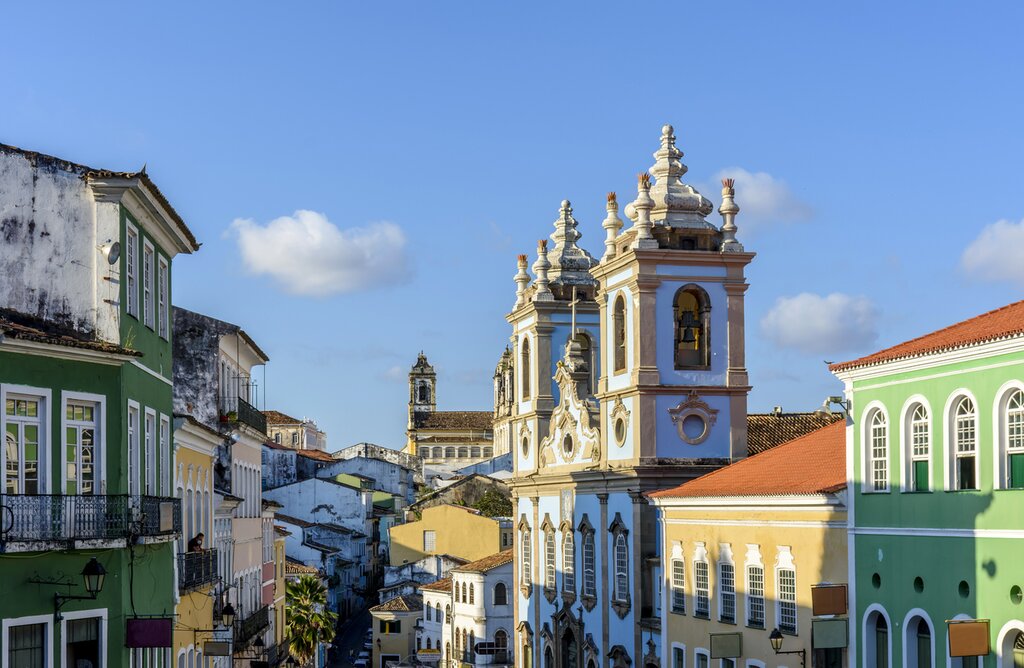
Say your goodbyes to the rainforest this morning as you cruise back to Manaus via boat. From here, you'll transfer to the airport and catch a connecting flight to Salvador, the capital of Brazil's Bahia state and a center of Afro-Brazilian culture, cuisine, music, and architecture. Salvador was founded in 1549 as the first capital of colonial Brazil, making it one of the oldest cities in the Americas and one of the first planned cities in the world.
After checking in at your hotel, get your bearings with a visit to the Lacerda Elevator, the link between the "Upper" and "Lower" cities. Enjoy the panoramic views and then head over the road to the Mercado Central (Central Market) to browse the stalls for souvenirs and snack on some tasty street food.
Day 10: African Heritage City Tour, Bahian Percussion Workshop
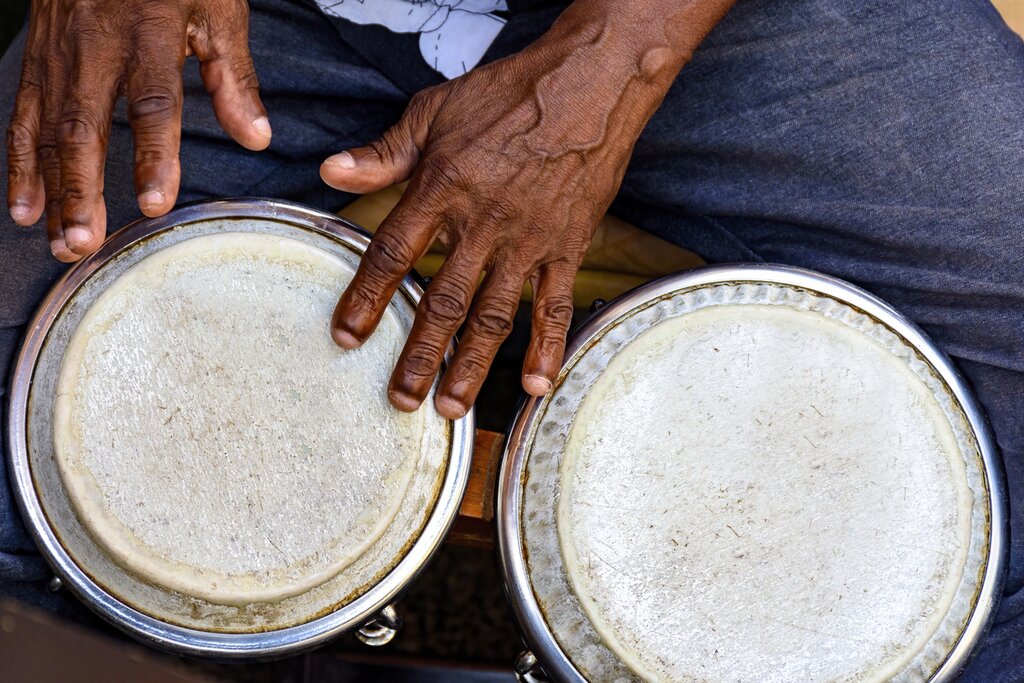
Today's guided walking tour starts at the mouth of the bay and continues to the historic center—the Pelourinho area. Here, you'll visit the Afro-Brazilian Museum (Museu Afro-Brasileiro), which traces the city's West African origins and displays wooden sculptures of Orixá deities by Bahia's most celebrated artist, Carybé. Take a stroll along cobbled streets to Pelourinho Square and the 18th-century Church of Our Lady of the Rosary of the Black People, a colonial church dedicated to enslaved people and freedmen, and visit the Gastronomy Museum to learn about the African influence on Bahian cuisine.
When it's time for lunch, pull up a seat at one of the best seafood restaurants in the city, located in front of the Baroque facade of the 18th-century São Francisco Church. After lunch, you'll get to discover the percussive heart of Bahia. The rhythmic soul of this region is African, and the distinctive syncopations created by Bahians have inspired many international musicians. Along with a local percussionist who will also act as a guide, you'll participate in an interactive musical workshop to learn about Bahia's rhythms and capoeira hand percussion instruments.
Day 11: Salvador Market Tour, Art & Literature of Bahia, Rio Vermelho Nightlife

One of the best ways to get to the heart of any city is to visit its municipal markets. And in Salvador, there are few better than the São Joaquim Fair. It's the largest such market in the city, and inside, you'll find a labyrinth of merchant stalls, produce vendors, and food purveyors selling everything from fresh fruits and vegetables to artisanal pottery and candomblé religious artifacts. On today's tour, you'll browse these bustling aisles as you rub shoulders with locals doing their daily shopping.
At lunchtime, visit a local restaurant for a cooking demonstration where the chef prepares traditional moqueca. This rich seafood stew is Bahia's signature dish, made with cilantro, lime, garlic, coconut milk, and dendê (red palm) oil. After eating, you'll tour the museums of three of Bahia's most famous artists: the novelist Jorge Amado, photographer Pierre Verger, and the Argentine-Brazilian painter Carybé. Each of their works documented daily life in and around Salvador, showcasing the street scenes and religious traditions that make Bahia a singularly beautiful culture.
Around 6:30 pm, a local guide will take you out for an evening of partying in Rio Vermelho, a beachfront neighborhood known as Bairro Boemio (the Bohemian Quarter). The first stop is a small boteco (watering hole) to have a drink and try acarajé. These delicious (and iconic) street-food fritters are a mix of black-eyed peas, onions, and dried shrimp, formed into a ball and fried in dendê oil. You'll then visit another boteco to try more local snacks and drinks. Afterward, head to the waterfront, mingle with locals, and enjoy some live music and dance.
Day 12: Transfer to Praia do Forte, Afternoon Whale Watching Tour
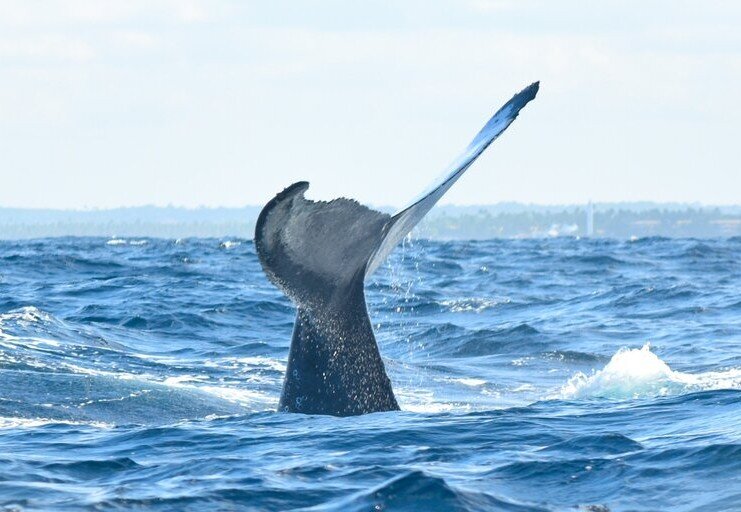
Meet your private driver this morning for a scenic journey up the Bahian coast. The 1.5-hour drive follows the scenic Coconut Highway, which leads north 50 miles (80 km) from Salvador to Praia do Forte, a fishing village home to some of the best beaches in Bahia. Upon arrival, you'll check in to your hotel and take some time to settle in.
Later, head to the port for a whale watching tour. The Bahian coast is a migratory route for humpback whales, who travel up from Antarctica and pass this region from July to October. During this time, the waters are filled with thousands of these aquatic mammals, which measure up to 46 feet (14 m) and weigh up to 40 tons. Today's group tour begins when you hop aboard a schooner led by a bilingual guide and expert biologist. Though humpbacks are spotted most frequently on the southern Bahian coast, your guides will lead you to breeding grounds where you're all but assured to spot a few.
Day 13: Beach Day in Praia do Forte
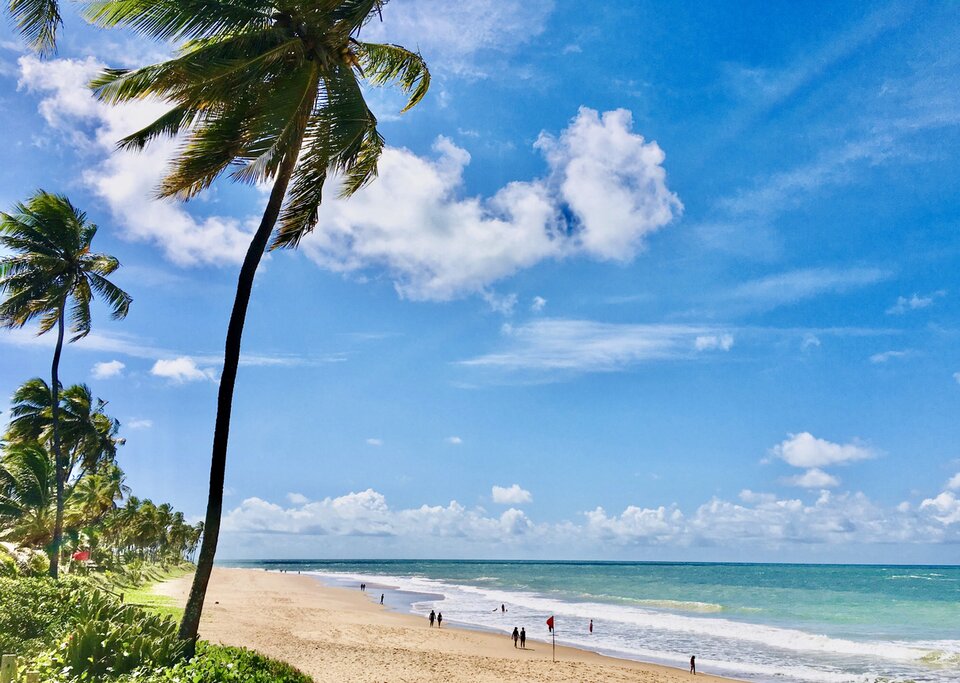
Day 14: Transfer to Salvador, Depart
